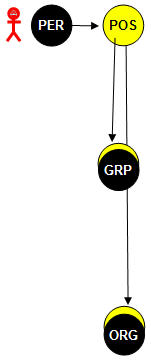People at Work in the Organizational Network |
Organizational Intelligence forms from the informal social network of people and the formal network of positions. While we are newly aware of the social networks at work, we are remarkably unaware of the real network of relationships embedded in the formal organization itself.Organizations are constructs of positions, teams, and (sub) organizations, each unit of analysis a distinct type of organizational structure with different sources of legitimacy. Each represents a different type of intelligence and provides a different perspective on the whole complex organization network.Positions generally represent and are animated through people holding jobs. Here is where the social network and the organizational network intersect and overlap. Leadership positions represent teams and organizations. Position is the common element of the organizational network model, able to represent each of the other units of analysis, as well as being that all-critical bridge to individual people. |
People in Positions |
|
People in Teams |
|
People as Members of an Organization |
|
